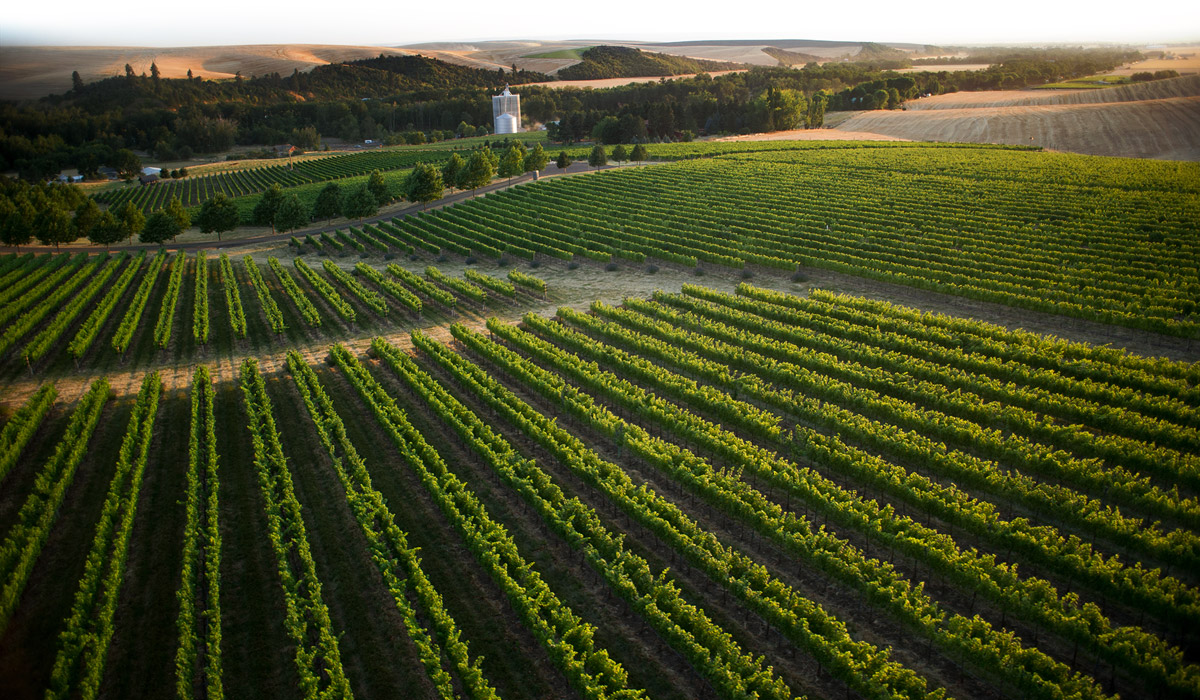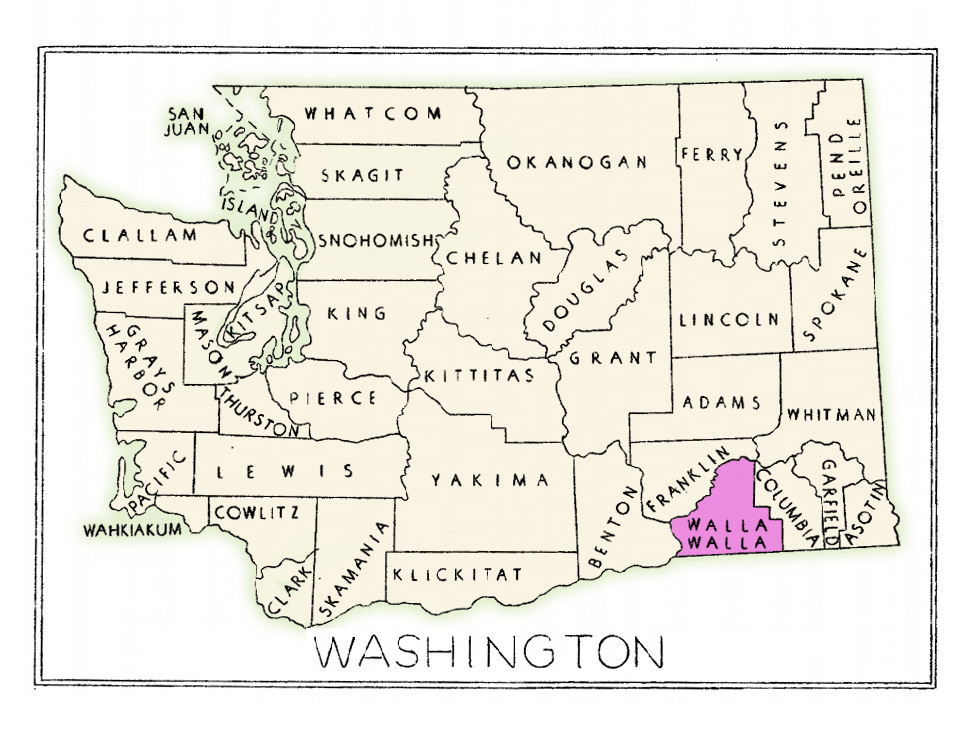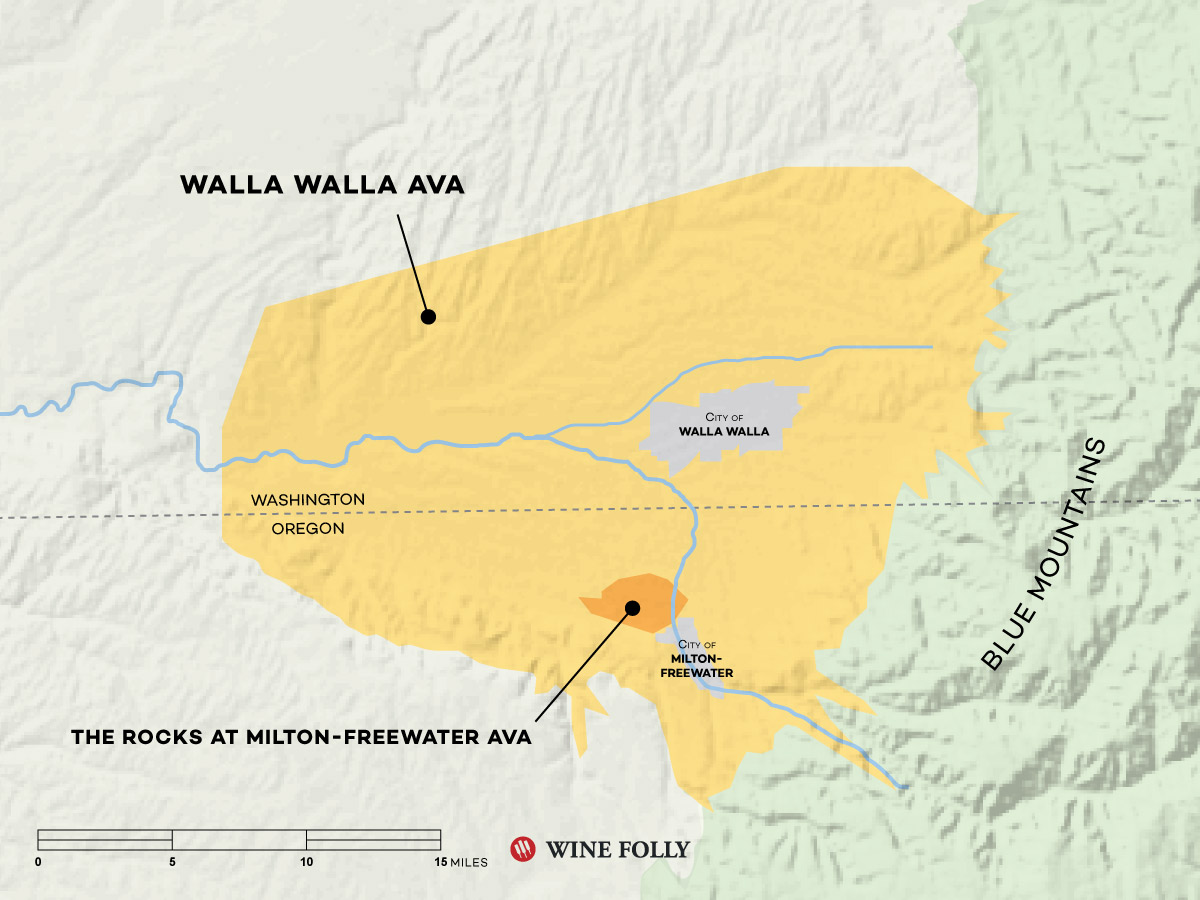This small wine region straddles the Oregon-Washington border and offers some of the best examples of Syrah in the United States.
New Guide!: Access the complete guide to Walla Walla Wine.
Before Walla Walla was famous for wine, you could drive for miles with the distinct smell of alliums wafting into your car.
Walla Walla sweet onions are still a major part of the region’s farming (there’s even a festival that includes such joys as onion sack races and an onion eating contest), but it’s the vineyards and the wine that’s made Walla Walla a beacon for travel.
Let’s take a survey of what’s happening in Walla Walla and get to know what to look for when on the hunt for outstanding Walla Walla wine.
Walla Walla Wine Region
A lil History
When Walla Walla was established as an official American Viticultural Area (AVA) in 1984 there were just 60 acres planted to a random smattering of grape varieties.
The region grew by leaps and bounds in the early 2000’s and now is home to just over 100 wineries and 1,500 acres of vineyards.
The large growth in the region can be attributed to the work of the region’s founding wine pioneers (multi-generational wine-growers behind the valley’s biggest names) that started to cultivate vineyards in the 1970’s on a hunch that Walla Walla could make great wine.
- Acres Planted: ~1900
- Number of Wineries: 112 (2015)
- Top Varieties: Cabernet Sauvignon, Syrah, Malbec, Grenache, Petit Verdot, Sangiovese, Tempranillo, Viognier, and others
- Expect to Spend: $40–$60
What does Walla Walla do best?
The critics say Syrah
Even though Cabernet Sauvignon is the most planted variety in Walla Walla, critic scores from places like Wine Spectator and Wine Enthusiast will tell you that Syrah is the top wine from Walla Walla.
Top-rated producers including Abeja, Reynvaan, K Vintners, Gramercy Cellars, Cayuse, and àMaurice continually receive their highest scores for single-vineyard Syrah and Grenache.
The Syrah from Walla Walla is often noted for its juicy plum, savory blackberry, and meaty notes of black olive and bacon.
Other wines of interest
Walla Walla may be most known for Syrah but it’s also a great climate for making refined, red-fruit loaded Cabernet Sauvignon and Merlot. For the adventurous few, some of the more intriguing varieties include Petit Verdot, Malbec, and Tempranillo.
Because the growing season is so long in Walla Walla, these warm-climate grapes can reach optimal ripeness to produce balanced, high-quality wines.

Vineyards, wheat, and sweet onions are the 3 of the most important crops of Walla Walla. This is Figgins Family Estate on the East side of the city
Walla Walla terroir
Climate: Despite what you might imagine about the Northwest, the weather in Walla Walla is dry and sunny.
In fact, the entire Columbia Valley (Washington’s major AVA which includes Walla Walla) receives little rainfall due to a rain shadow caused by the Cascade Mountains. During the growing season (from April to October), Walla Walla does get hot during the day but the temperature drops substantially at night.
While daytime heat can spike well above comfortable vine growing temperatures (Walla Walla has hotter average July temperatures than Napa Valley), the nighttime temperatures drop so low that resulting wines will have both higher alcohol and higher acidity.
As you travel east (towards the Blue Mountains) or upwards in elevation in Walla Walla, you’ll notice that the temperatures are cooler which bodes well for varieties like Cabernet Sauvignon, Merlot, and Malbec. Keep this in mind when on the hunt for your favorite wines.
Soils: The soils in Walla Walla are deep in some areas as the region was part of the backwash of the Missoula floods.
However, the mixture of sand and loess (wind blown calcareous silt) is both well-drained and low in fertility. This means vines won’t produce as much vigor (leafy overgrowth) during the growing season and focus more of their growth on producing grapes. This translates into richer red wines with less green herbal characteristics and more refined tannin.

Walla Walla is the source of perfect blooming onions. NCRS Oregon
One area within Walla Walla that’s of keen interest for Southern Rhône varieties (such as Syrah and Grenache) is the newly anointed The Rocks of Milton-Freewater AVA. The Rocks is the alluvial fan of an ancient riverbed that’s covered with black basalt rocks.
The rocks heat up during the day and act as heaters keeping the vineyards warmer at night. This is especially good late in the growing season when the region’s temperatures drop off. The wines from The Rocks have a much more plush style (riper fruit notes, and slightly lower acidity) with more rustic notes of roasted meats and game.
Last Word
Walla Walla wines are a delicious find, but they’re still quite hard to source outside of Oregon and Washington.
Why? Well, with less than 2000 vineyard acres, most wines are soaked up by local markets in Seattle, Portland, and the surrounding Northwest.
So, if you really want to sample what the region has to offer you might just have to make a trip. If not to Walla Walla (which is a 270 mile / 434 km drive from Seattle), then to Portland or Seattle–you’ll be delighted with what you discover.

